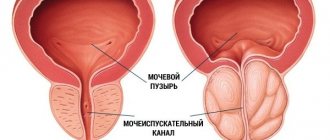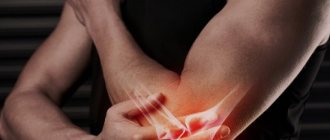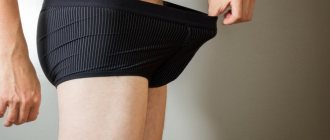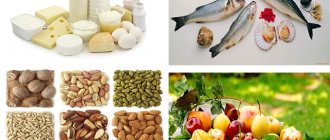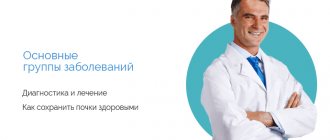Prostatitis is inflammation of the prostate gland.
The prostate gland (prostate) is an organ of the male reproductive system, which is located directly under the bladder. The urethra (urethra) passes through the thickness of the prostate gland. Therefore, the inflammatory process in the prostate immediately affects both sexual function and urination.
Prostatitis is one of the most common diseases of the male genitourinary system. With age, the likelihood of the disease increases; It is believed that at the age of 30, prostatitis is detected in 30% of men, at 40 – in 40%, at 50 – in 50%, after 50 years, prostatitis is detected in almost every man.
Causes of chronic prostatitis
The most common cause of chronic inflammation of the prostate are infections and sexually transmitted pathogens.
For example, Trichomonas. A sedentary lifestyle also contributes to the development of such prostatitis. But prostatitis itself is not as scary as the fact that this disease is a trigger for the occurrence of more severe diseases - male infertility, prostate adenoma. The causes of the disease also include:
- frequent hypothermia;
- low immunity;
- hormonal disorders;
- a person has bad habits;
- pelvic organ injuries;
- sedentary lifestyle.
The causes of chronic prostatitis are divided into two types:
- Infections. They enter the body in various ways - through the urethra, through the blood or lymph flow from foci of infection or inflamed organs in one’s own body.
- Poor blood circulation in the prostate gland or stagnation of its secretion, which occurs in the following cases:
- sexual abstinence for a long time;
- frequently interrupted sexual intercourse or unrealized arousal;
- defective ejaculation.
Stress, a sedentary lifestyle, and alcoholism can also contribute to chronic prostatitis in the male body. Exacerbation is often observed after hypothermia, various infectious diseases, errors in diet (too spicy food, alcohol).
Causes of inflammation
The risk of developing prostate inflammation increases due to various factors predisposing to the disease:
- Hypothermia, one-time or associated with the nature of work in the open air.
- A sedentary lifestyle leads to disruption of the functioning of the digestive system.
- Chronic somatic diseases (diabetes mellitus, hypertension).
- Foci of focal, perifocal infection (rhinitis, tonsillitis, stomatitis, gastritis).
- Persistent UGI (chlamydia, trichomoniasis, herpes virus).
- Stress, insomnia, chronic fatigue syndrome.
- Decreased immunity due to illness, surgery, emotional stress.
- Bad habits leading to the development of intoxication: alcohol, smoking, strong coffee.
- Occupational injuries to the perineum of car drivers, athletes, workers in hazardous industries.
- Promiscuous sex life, interrupted sexual intercourse, devoid of sensuality intercourse with incomplete ejaculation, prolonged absence of intimacy (low need for sperm leads to stagnation in the gland).
- Venereal diseases.
Despite a fairly large number of provocative moments, the essence of prostatitis is the occurrence of stagnation inside the organ against the background of impaired blood circulation and lymph outflow.
Symptoms of chronic prostatitis
The most common symptoms:
- feeling of discomfort or pain in the groin and suprapubic areas, perineum, scrotum, rectum, lumbosacral region;
- frequent and painful urge to urinate;
- pain in the lower abdomen (constant or during urination);
- intermittent or sluggish urine stream;
- reduction in the duration of sexual intercourse, deterioration of erection, decreased libido, premature ejaculation;
- periodic/constant absence of morning erection (spontaneous);
- a pulling pain in the head of the penis after ejaculation, which disappears on its own within half an hour.
Many men do not pay attention to the signs of chronic prostatitis, believing that the disease will go away on its own. However, it progresses, causing various complications: pyelonephritis, cystitis, vesiculitis. Over time, infertility and impotence develop against the background of inflammation of the prostate gland.
Bibliography
- On the pathogenesis and prevention of chronic prostatitis (clinical and experimental study) / S.H. Al-Shukri, A.G. Gorbachev, S.Yu. Borovets, A.G. Tyurin, I.V. Knyazkin // Urological Gazette, 2012. - “2, vol. 2. - P. 15-18.
- Diagnosis of chronic abacterial prostatitis / Z.A. Kadyrov, V.S. Stepanov, Sh.V.Ramishvili, Sh.G Mashaneishvili // Andrology and genital surgery, 2021.- No. 3(20) – P.36-42 DOI: 10.17650/2070-9781-2019-20-3-00-00 .
- Clinical, laboratory and instrumental research methods in patients with chronic prostatitis and chronic hemorrhoids / Z.A. Kadyrov, Kryachko A.A. Z.O. Aliyev et al., // Andrology and genital surgery, 2021.- No. 17(17).-P. 34-38.
- Prostatitis: what is new and useful in fundamental and clinical research? / K.L. Lokshin // Bulletin of Urology, 2021.- No. 5(4).- P.69-78.
- Acute and chronic prostatitis - what is important for practice?/ K.G. Naber et al.// Bulletin of Urology, 2021.- No. 2.- P. 71-80.
- Chronic prostatitis: current issues of diagnosis and treatment at the stage of primary specialized and health care / D.I. Trukhan, D.G. Makushin, N.V. Bagisheva // International Journal of Applied and Basic Research. – 2021. – No. 6 (part 2) – P. 285-291.
Diagnosis of the disease
To accurately establish a diagnosis, it is necessary to undergo laboratory and instrumental examination. It includes:
- general urine analysis,
- general blood analysis,
- examination of prostate secretions,
- bacteriological examination of prostate secretion to identify microflora with determination of sensitivity to antibacterial drugs,
- blood test for PSA (prostate-specific antigen),
- Ultrasound of the pelvic organs and prostate gland,
- digital examination of the prostate.
Features of the structure and functions of the prostate gland - why this organ is called the second heart
The anatomical relationship of the male reproductive system, the outflow of sperm and urine is due to the origin of most of these structures from a common rudiment - the endorenal duct. From it the epididymal ducts, vas deferens, ejaculatory ducts, seminal vesicles, ureters, and prostatic urethra are formed. Only the prostate gland and testes originate from other points. The prostate forms in the form of numerous vesicles from the posterior urethra, which develops from the urogenital sinus.
The prostate has the shape of a chestnut and, surrounding the urethra at the base of the bladder, lies on the urogenital diaphragm. The gland, covered on the outside with a thick connective tissue sac, is a tubular-alveolar organ with numerous smooth muscle fibers.
Anatomically, the organ is divided into right and left lobes, and clinically there are two lateral lobes and one middle lobe. The prostate is vascularized by branches of the inferior arteries of the bladder, the arteries of the internal genital organs and the inferior rectal arteries. Innervation comes from the fibers of the autonomic system from the pelvic plexus.
Pancreatic secretion makes up 15% of the sperm composition. The secretion contains a number of active enzymes with highly active proteolytic factors such as fibrinolysin and fibrinogenase. Prostate secretion components also include diastase, β-glucuronidase, fructose, transaminases and amino acids. The prostate is the main producer of citric acid and acid phosphatase in human sperm. The secretions also contain spermine and spermidine and an antimicrobial zinc-containing polypeptide. Immunoglobulins are synthesized locally.
The main task of the prostate gland and seminal vesicles, like Cooper's glands, is to create seminal fluid along with the secretion of the testicle and epididymis. It provides transportation and protects the metabolism and motor activity of sperm.
The mixing of these ingredients occurs during ejaculation. The first portion of ejaculate, which does not coagulate or liquefy immediately, contains products of the Cooper and prostate glands. The last part of the ejaculate liquefies very slowly, about 15-20 minutes, and contains products of the seminal vesicles, including fructose. The first fraction includes activators of lysozyme, alpha-amylase, spermine and plasminogen.
Seminal protein concentration is half that in plasma and is 4.0 grams%. This is mainly albumin, the level of which is 140 milligrams% of the quantitative ratio of the secretion of the prostate gland to the secretion of the seminal vesicles. Besides proteins and enzymes, there are also their coenzymes, which are metals such as zinc, magnesium, calcium and selenium.
Systemic humoral influence is mediated by cellular receptors specific for testosterone, FSH and LH. In the most general form, they set the pace and direction of many biological reactions.
Complications that can be caused by chronic prostatitis.
This disease causes a lot of concomitant diseases that seriously complicate a man’s life:
- Urinary disorders: frequent daytime and night urination, weak urine stream, feeling of incomplete emptying of the bladder.
- Vesiculitis, colliculitis - inflammation of the seminal vesicles and seminal tubercle.
- Gland abscess is a serious pathology that requires hospitalization and very often surgical intervention.
- Prostate sclerosis – develops with prolonged prostatitis and requires surgical treatment.
- Cysts and, as a result, prostate stones.
- Impotence, infertility.
Treatment of chronic prostatitis
Treatment of this disease should only take place under the constant supervision of a doctor. One of the best and most effective modern medicines used to treat chronic prostatitis is made from an extract of prostate tissue. Its use gives quick results and elimination of symptoms.
Since therapy must be complex, other drugs must also be used:
- antibacterial,
- alpha blockers,
- non-steroidal anti-inflammatory drugs.
There are no universal cures. Therefore, doctors can recommend antibacterial drugs of different groups. Cephalosporins, protected penicillins, fluoroquinolones, nitrofurantoins and tetracyclines and others. All of them affect the cause of the disease – a bacterial infection.
Alpha-blockers are medications for chronic prostatitis, designed to relax the muscles of the prostatic urethra and bladder neck, to facilitate the outflow of urine by relieving spasm. In fact, they do not treat, but only eliminate the painful symptoms of inflammation.
Among anti-inflammatory drugs, urologists recommend those that reduce inflammation and reduce pain. The most common NSAIDs are based on:
- sulfonanilide,
- diclofenac,
- fluoroquinolone,
- trimethoprim,
- macrolide,
- tetracycline.
| A drug | Advantages | Flaws | Recommendations for use |
| Fluoroquinols | Excellent penetration into prostate tissue. Good bioavailability. Equivalence of oral and parenteral pharmacokinetics. Good activity against typical and atypical pathogens. | Cross allergy. Phototoxicity. Effect on the central nervous system. | Recommended for use. |
| Trimethoprim | Good penetration into prostate tissue. Does not require dosage selection. Good antimicrobial activity. | Negative against Pseudomonas aeruginosa and Enterobacteriaceae. | Second line drug. |
| Macrolides | Moderate activity against gram-positive bacteria. Activity against atypical pathogens. Good penetration into prostate tissue. Low toxic. | Insufficient activity against gram-negative bacteria. | Used for specific pathogens. |
| Tetracyclines | Good activity against atypical pathogens. | Inactive against Pseudomonas aeruginosa. Insufficient activity against staphylococci, Escherichia coli. | Used for specific pathogens. |
An effective cure for chronic prostatitis
Among the drugs with a large evidence base, there are drugs from the extract of bovine prostate gland tissue. Most often - in the form of suppositories or ampoules. The medicine is effective in treating both acute and chronic forms of the disease. This medicine is available in the form of suppositories (rectal suppositories) and ampoules (injections), the effect of the drug is aimed at strengthening the walls of blood vessels and improving blood circulation at the micro level.
The effect of using the drug for chronic prostatitis:
- Elimination of dysuric disorders and normalization of the urination process.
- Improving the functional state of the prostate gland.
- Reducing congestion, reducing swelling of the prostate gland.
- Reduction of severe symptoms of chronic prostatitis.
- Normalization of full blood circulation in the pelvic area, reducing the likelihood of blood clots forming in blood vessels.
- Decreased concentration of leukocytes that infiltrate prostate tissue.
The prostate has a defense mechanism
The prostate gland is physiologically protected from infection. Defense mechanisms include mechanical factors, antibacterial substances, cellular and humoral factors.
- Mechanical ones include: the length of the urethra, urination, ejaculate and the characteristic location of the canals.
- Antimicrobial substances are: prostate antimicrobial factor containing zinc and spermine, spermidine and lysozyme. The prostate contains the highest concentration of zinc in the body, which decreases with inflammation, leading to a local decrease in immunity.
- The cellular protection factor for prostate infection is the characteristic presence of leukocytes in urine, prostate secretions and semen. Increased phagocytosis in patients with infectious forms of prostatitis indicates a very important role of the cellular response in infections of the lower genitourinary system.
- In patients with prostate infections, titers of immunoglobulins in prostate secretions are elevated, most often IgA, IgG and IgM, and their levels are much higher than in blood serum.
Treatment methods for chronic prostatitis
In most cases, chronic disease is successfully treated with conservative methods. But it should be remembered that therapy will bring quick positive results only with an integrated approach. It is recommended to reconsider the lifestyle that causes the disease, otherwise a relapse is likely. Abuse of alcoholic beverages, unbalanced diet, sedentary lifestyle and promiscuous sexual relations are extremely harmful to the male reproductive system.
Healing procedures:
- Prostate massage is performed manually through the anus. It is worth noting that the procedure is not very pleasant, but the effectiveness is very high.
- Physiotherapeutic procedures. Treatment of chronic prostatitis with thermal physiotherapy gives good results by improving microcirculation and absorption of drugs into the tissue. Physiotherapeutic procedures include ultrasonic heating and irrigation with an antibacterial solution using enemas.
- Balneotherapy. In many sanatoriums, this disease is successfully treated using balneotherapy methods, that is, with the help of mineral waters. For the treatment of patients with prostatitis, low-mineralized water is usually prescribed, both internally and in the form of baths. There are well-known hospitals in Evpatoria, Saki, Truskavets, Morshyn, Zheleznovodsk.
- Diet therapy. You should start following a special diet at the first signs of prostatitis. First of all, you should avoid alcoholic beverages, since ethyl alcohol irritates the prostate ducts, increasing pain and inflammation. It is also necessary to limit the intake of fatty meats to prevent the formation of cholesterol plaques and further deterioration of blood circulation. Legumes, mushrooms, offal, salty and spicy foods, tea and coffee, carbonated drinks, and baked goods are prohibited.
The diet for chronic prostatitis should include foods rich in zinc (it is found in seafood and pumpkin seeds). It is recommended to eat as many vegetables as possible (except those that contribute to gas formation, such as cauliflower), dairy products, cereals and dried fruits.
Preventive measures
Chronic prostatitis usually does not develop if a man leads a healthy lifestyle: watches his diet, exercises, etc. Prevention of prostatitis is facilitated by giving up bad habits and casual sexual intercourse.
There are primary, aimed at preventing the occurrence of the disease, prevention, and secondary, the task of which is to prevent relapse (exacerbation) of existing chronic prostatitis.
Primary prevention comes down to regular sexual intercourse, a balanced diet, adherence to a physical activity regimen, timely and complete treatment of any infectious (purulent) diseases of the body and timely sanitation of the oral cavity.
Secondary prevention involves regular examination by a urologist and preventive treatment - multivitamins, restorative drugs, exercise.
as a medicine to prevent prostate diseases.

